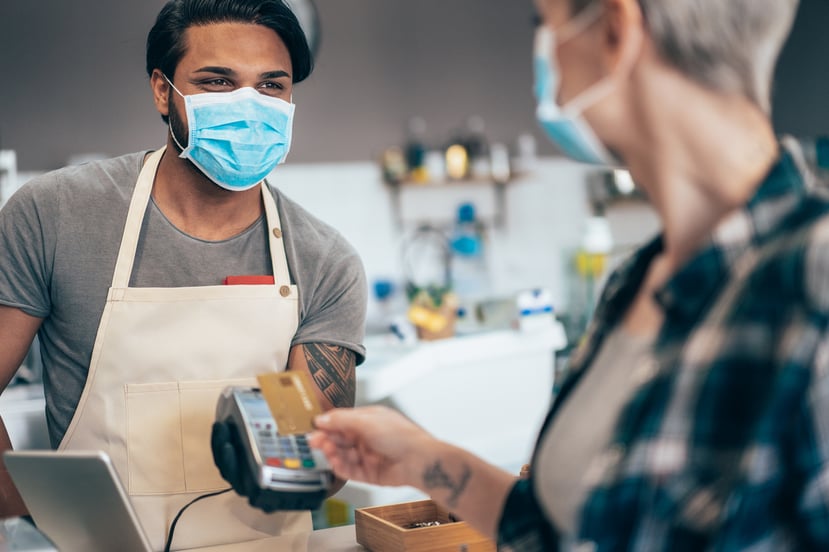
At the beginning of 2020, "contactless" was an obscure term typically associated with the new generation of debit and credit cards. Using near-field communication (NFC) payment technology, these cards are capable of being tapped instead of swiped or dipped - shedding several seconds from time in the subway turnstile or checkout line. However, despite Visa and Mastercard's heavy promotion, US adoption has been gradual, shaded toward frustratingly slow…until the pandemic hit.With coronavirus-prompted hygiene concerns, household brands like Domino's Pizza have made contactless delivery safety measures a central point of recent advertising. This mindset inevitably has a carryover effect on consumer payments behavior. Sure enough, the recent Eye on Payments report from card processor PSCU confirms significant movement on various contactless fronts.
A PSCU July survey of 1,500 US consumers - including members of credit unions and those with no affiliation to them - validates trends that seem apparent to many of us - touchless payments are gaining traction and favor. Card issuers of all shapes and sizes need to pay heed or risk losing share-of-wallet, regardless of the form that wallet may take.
Tap and Go
On the debit side, PSCU found that tap-and-go accounted for roughly 12% of card-present transactions in July, up from approximately 8% last year. For credit, the contactless share was 9%, versus 6% in 2019. These 50% growth rates represent the inflection points from the slow pre-pandemic rate of adoption noted above.
Mobile wallets, such as Apple Pay and Google Pay, are reporting 75% and 85% increases in debit and credit transactions, respectively. Not surprisingly, online payments, which had already reached mass adoption, received a further forward jolt from COVID-19 spending patterns. Reported growth in the number of consumers regularly using mobile grocery and meal delivery apps grew in the 50% range.
Card Not Present (CNP) transactions – which aren't necessarily synonymous with e-commerce - now account for over half of the total value of all purchases made with a credit card. Debit cards make up a smaller percentage of overall CNP transactions; however, the percentage increase in the value and volume of transactions made with them are similar to credit cards.
Another interesting finding, from a variety of data sources, is that the number of consumers who report having a contactless-enabled card remains well below the number issuers report having distributed. This fact indicates an awareness gap, one that increasingly offers an opportunity for proactive issuers. As consumers demonstrate more interest in contactless functionality, issuers can connect the dots and foster awareness, which will put them in a position to gain wallet share.
Paper or Plastic or Neither?
For years, the "paper or plastic?" choice at checkout referred to the type of bag a consumer desired. In the US, paper money has fallen into disfavor due to hygiene concerns. Similar concerns are surfacing about passing a plastic card between customer and clerk or interacting with an unclean touch screen handled by countless others. These concerns have breathed new life into both tap-and-go and mobile wallets. The latter, which has been looking for a "why" for years, may have finally found it.
Another critical takeaway for banks and credit unions is that people are willing to pay for convenience. Consider delivery service examples like Grubhub and Instacart, which charge an additional fee for the convenience of to-your-door delivery. Many consumers find this model more appealing than ordering directly from the grocer or restaurant. Why? Because you don't have to spend time speaking with someone, the gratuity process is simplified, and your payment info is already securely on file.
The Bottom Line: Consumers’ concerned for their health are changing how they pay for goods and services. CNP levels are unlikely to dop, even when the "all clear" sounds, regarding the pandemic. These same concerns are driving consumers who are paying in-person to contactless cards. Given this context, financial institutions of all sizes have an opportunity to take steps that will impact their position in consumers’ wallets.
Banks and credit unions should make strategic moves to leverage the increases in CNP and contactless card use or be prepared to be edged out of market share.
For more articles by the author, Michael Carter, click here.
For more on this topic, read Contactless Cards: Is the Train Leaving the Station?


